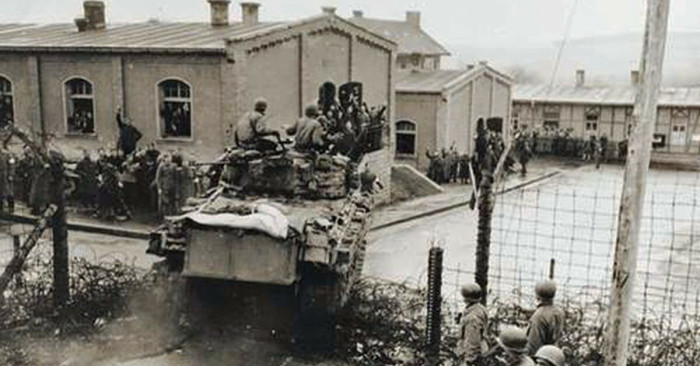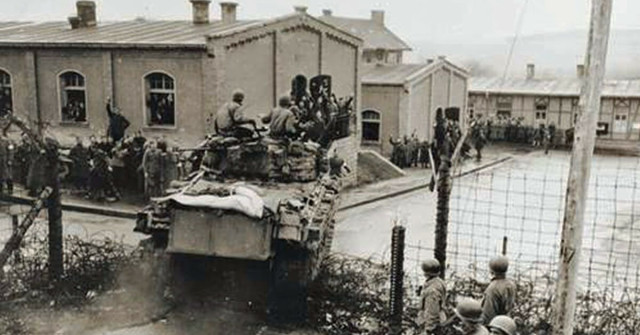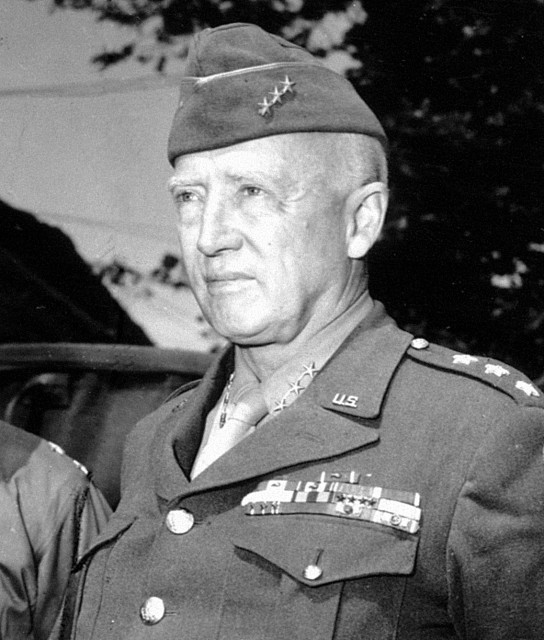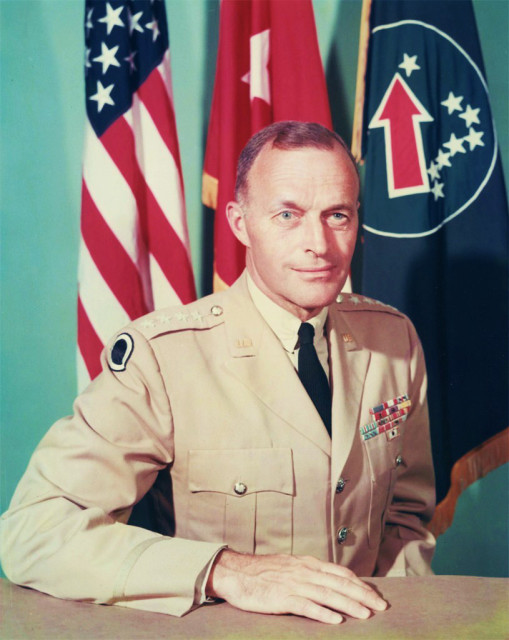

.
Following that defeat, newly promoted Lieutenant General George S. Patton took over command of the U.S. II Corps from Major General Lloyd Fredendall, who was blamed for the battle’s outcome. For Patton, his new command also allowed him to deal with a family problem—his son-in-law, Lieutenant Colonel John K. Waters had been taken prisoner during the battle. It was to be nearly two years before Patton had the chance to free his son-in-law.
It was only in 1945 that Patton was reunited with his daughter’s husband and not before one of the more glaring blunders of his career: a seldom recalled, total flop of a mission behind enemy lines called Task Force Baum.

Patton was in command of the U.S. Third Army, the far right flank of the Allied forces pushing into Germany. By late March 1945, Patton’s troops were crossing the Rhine and the POW camp at Hammelburg was about 50 miles to the East and behind the current German line. As Patton was ordered to swing his forces North, he planned a raid to liberate the camp.
Patton claimed he was worried about the German’s executing the American POWs, but nevertheless, nobody else thought the raid was a good idea. Though he claimed he had approval from his superior, General Omar Bradley, Bradley claimed different.
Command of the mission fell to Lieutenant Colonel Creighton Abrams, another officer opposed to it, who wanted a regimental-sized force to take on the job. Patton, though, only approved a group of just over 300 men and officers with some medium and light tanks and other vehicles. Captain Abraham Baum, a battle-hardened officer in Patton’s neigh-unstoppable 4th Armored Division, was selected to lead these men to Hammelburg, to rescue about 300 U.S. officers held as POWs, and return.
The POW camp, Oflag XIII-B, at Hammelburg had just endured a brutal winter. German officers and guards hardly had enough coal for their fires to keep their own rooms above 20F (-7C). Prisoners, U.S. and Serbian officers, were on starvation rations and many didn’t even have the strength to walk.
Waters had just arrived in the camp earlier in March having completed a forced march from another POW camp in Poland, 340 miles (547 km) in the freezing cold.
Late on March 26th, Task Force Baum headed out with 303 men, 11 officers, 16 tanks, 28 half-track personnel carriers, and 13 jeeps and the like. They only had a few maps and not even an exact location for the camp they were trying to find so; progress was very slow through the night and they had to ask directions from locals.
Furthermore, the German’s knew they were there. In fact, they believed the force cutting dozens of miles into their lines was the spearhead of a major U.S. assault. They quickly directed all available troops and armor to the area to hunt them down and fend off the attack.
By the afternoon of March 27th, Baum and his men had made it to Oflag-XIII-B, but had been fighting through the increasing number of German troops most of the way. Only about half his men were in fighting shape, the rest dead, wounded or exhausted.
Still the unit carried out its mission and began the assault on the camp. Mistaking the grey-clad Serbian prisoners as German troops, they fired rounds into their half of the camp, killing many of them. The German general in charge of the the camp quickly realized they were outnumbered and done for and asked Waters to negotiate an end to the fighting. As Waters and several others approached Baum’s force, a German guard who, understandably, didn’t realize what they were up to, shot Waters in the buttocks.

On a dark, moonless light, Baum lead his column back towards safe territory. Lights seldom could be used, lest the Germans spotted them. All engines were frequently turned off to hide in silence. Sometime in the night, Germans used a captured U.S. Sherman tank and spoke in English over the radio to lure them in. Though Baum and many were able to escape, they lost four Sherman tanks of their own to German attacks
Running dangerously low on fuel, Baum ordered his force to stop until daylight, when they could more easily navigate. But as they waited, the Germans encircled their position. Just after dawn on March 28th, as the column readied themselves to drive through hell, shots erupted from every direction. All was lost in a few short minutes. Baum was shot in the groin and taken to Oflag-XIIIB along with many others. Thirty-two men are listed as killed in action and 247 as wounded, missing, or taken prisoner. Just 35 men made it back to the U.S. position.
With their front lines continuing to collapse, the Germans evacuated Oflag-XIIIB, leaving behind all those who couldn’t walk, including Waters and Baum. Baum’s task force had punched a hole in the German line which allowed U.S. troops to pour in and take more ground, speeding their advance. Also, the mission distracted German troops, so that Patton’s Third Army was able swing North with greater success than it would have otherwise (another reason Patton claimed he ordered the mission when General Dwight D. Eisenhower furiously reprimanded him for it).
On April 6th, nine days after the disastrous, but helpful raid, U.S. forces liberated Oflag-XIIIB, freeing Baum and Waters. Baum was personally awarded the Distinguished Service Cross by Patton. Any higher-level award would have required an investigation and Patton was more than a bit eager to put this whole incident behind him.
By Colin Fraser for War History Online
Sources:
- American Thinker – Fury For Real — Patton’s Raid on Hammelburg
- Task Force Baum
- Wikipedia – Task Force Baum
- All photos sourced from wikipedia.org

Δεν υπάρχουν σχόλια:
Δημοσίευση σχολίου